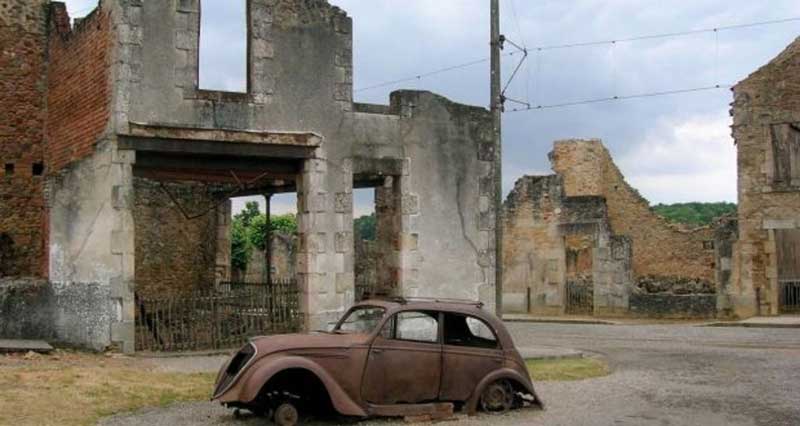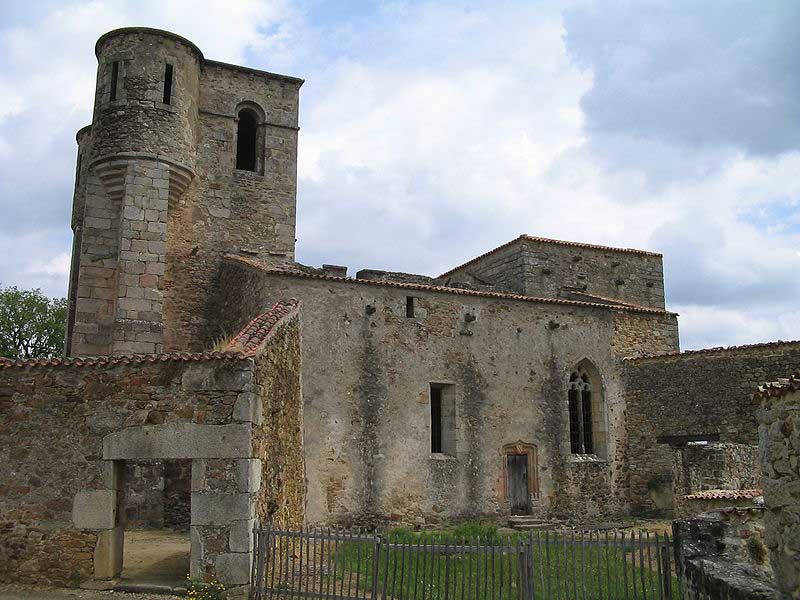
Oradour-sur-Glane is the name of a peaceful village in France, which was frozen in a Nazi massacre during the days World War II.
During the World War II, Oradour-sur-Glane, a small farming village of around 350 inhabitants, located near Clermont-Ferrand, some 15 miles (24.14 km) away from the city of Limoges, was included in the German occupied Zone of France. It was the site of a brutal massacre that wiped out nearly every man, woman and child in the village. During that time, the village population had almost doubled to about 650 people, swelled by refugees, including some Jewish refugees, from other parts of France.
All of a sudden, at around 2 pm on 10 June 1944, the soldiers of the 150 Waffen-SS unit entered the idyllic and tranquil village of Oradour-sur-Glane, as they believed that the villagers are involved in the French resistance and had captured Helmut Kampfe, commander of the 2nd SS Panzer Reconnaissance Battalion.

A few residents who had previously been displaced by the Nazis made an early escape, while the SS soldiers rounded up the entire population and sealed the exits of the village, so that nobody could escape. After that, when the townspeople of the sleepy village were peacefully enjoying their midday meal, an announcement was made to assemble all of them on the Market Square, as the visiting Germans would check their identity papers. In fact, every single person was commanded to attend immediately, along with the babies, the sick and the elderly.
Although the majority of the residents complied with the instruction peacefully, some others sensed it as a foul smell, especially the few Jewish families who were hiding in the village and the young men who apprehended that they would be picked up for forced labour camps in Germany. Around 20 people managed to avoid the round up, while six people, who were not the inhabitants of the village and just happened to be riding their bikes there at the time, were forced to assemble with the inhabitants.


Thereafter, the soldiers separated the villagers by gender. Members of the 1st and 2nd platoons took the 197 men in small groups to several barns and larger buildings and locked them in, guarded by armed soldiers, while the 3rd platoon locked up around 240 women and 205 frightened children in the village church. At around 4 pm, there was an explosion, a signal for the German soldiers. Immediately, they opened fire and after that went inside executing anyone still visibly alive. The bodies were then set alight, though many of them were still alive. Only five boys could escape crawling through a hole in the wall and hiding in the cemetery.
At around 5 pm, the Germans turned their attention to the church and threw gas bombs through its windows, to kill the helpless women and the children. As they struggled to escape from the thick black smoke that filled the building, the SS soldiers re-entered the church and fired upon the crowd, taking special care to crouch down to hit the children. By the time the massacre was over, the death toll stood at 642 people, which included 254 women, 207 children and 181 men.


After all the inhabitants of the village, including seven Jewish refugees, were killed, the German soldiers looted the desolate dwellings and then burned the village to level it to the ground. The SS men withdrew from the smoking ruins at about 8 in the evening of the same day. It is believed that only seven, more or less severely injured, villagers survived the massacre, which included six men and only one woman, Marguerite Rouffanche. According to her testimony, with the help of a stool, which was used to light the candles, she tried to reach for the widest window in the middle of the three. She heaved herself up to it, as best as she could and threw herself out of the opening that was about nine feet down. Approximately fifteen other inhabitants of the village were also saved, as they could escape the Germans before the massacre started or evaded the roundup by hiding.

After the end of the War, General Charles de Gaulle declared the village should never be rebuilt, instead it would serve as a memorial to the brutal Nazi occupation and the people who paid the greatest price during it. Oradour-sur-Glane has remained untouched until date, as a reminder of the inconceivable evil of the Nazis and a shrine to those who died.